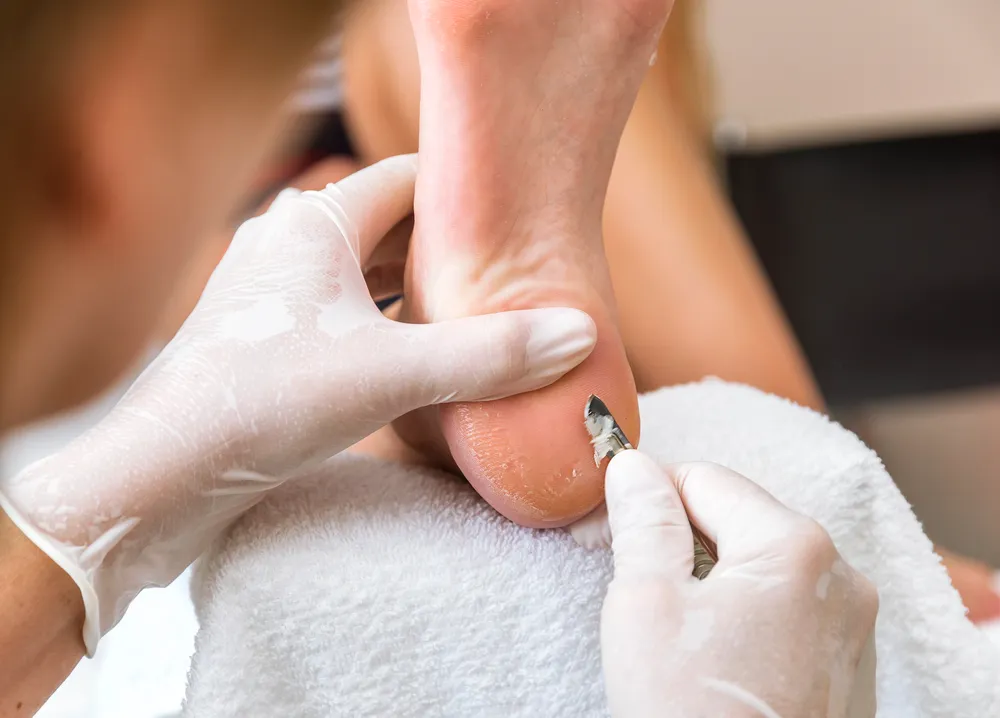Retargeting Ads for Podiatrists: How to Stay Top-of-Mind with Potential Patients

In the current competitive healthcare sector, podiatrists must identify effective strategies to engage potential patients through innovative marketing strategies. One potent approach is retargeting, which enables practitioners to reconnect with healthcare consumers who have previously expressed interest in their foot care services. This article provides an overview of the fundamentals of retargeting, its importance for podiatrists, and how it can enhance their digital marketing efforts, particularly in patient acquisition. We will examine the various types of retargeting, best practices for creating compelling advertisements, including local SEO and leveraging platforms like Google Business Profile, and essential steps for effectively establishing retargeting campaigns. Engaging with this content will reveal how retargeting can elevate a podiatry practice, improve patient engagement, and attract a greater number of patients, including specific demographics like the geriatric population.
Key Takeaways:
- Retargeting is a marketing strategy that keeps your podiatry practice in front of potential patients who have previously visited your website.
- Retargeting is important for podiatrists because it increases brand awareness, improves conversion rates, and targets high-intent customers, all while being cost-effective.
- The best practices for retargeting ads for podiatrists include defining your target audience, creating compelling ad copy and visuals, setting a frequency cap, and utilizing dynamic retargeting.
What is Retargeting?
Retargeting is a highly effective digital marketing strategy employed across various sectors, including the healthcare industry, aimed at engaging potential patients who have previously interacted with a practice’s website or online advertisements.
By utilizing cookies and tracking data, healthcare providers, such as podiatrists, can present personalized advertisements to these visitors across multiple platforms, including geo-personalized web pages and patient engagement tools. This strategy enhances patient acquisition efforts and improves the quality of leads.
Furthermore, it not only strengthens the podiatrist’s online reputation, with platforms like Yelp and Healthgrades playing a role, but also fosters a tailored marketing approach essential for practice growth in the competitive healthcare sector.
Why is Retargeting Important for Podiatrists?
Retargeting is especially crucial for podiatrists, as it enables them to reconnect with potential patients who have previously expressed interest in foot care services, including diabetic foot care, but did not convert during their initial visit to the website.
This strategy not only improves overall patient acquisition but also capitalizes on the influence of online reviews and testimonials on platforms like RateMDs and Vitals to foster trust within the community, thereby strengthening relationships with healthcare consumers.
In a highly competitive industry, the effective implementation of retargeting can significantly enhance a podiatrist’s marketing strategies and contribute to sustained growth of their practice.
How Does Retargeting Work?
Retargeting is an effective marketing strategy that employs tracking pixels embedded within a website’s code to gather data regarding visitor behaviors and interactions, which can enhance lead quality and patient satisfaction.
For instance, when a healthcare consumer visits a podiatrist’s website but does not proceed to book an appointment, the tracking pixel captures this information. This enables the podiatrist to display targeted advertisements across various platforms, including Google and social media, to re-engage the visitor.
This approach to personalized marketing not only improves the effectiveness of advertisement placements but also aligns with contemporary marketing practices, ensuring that potential patients are continually reminded of the foot care services that piqued their interest.
What Are the Different Types of Retargeting?
In the field of digital marketing, podiatrists have several retargeting strategies at their disposal to enhance outreach and engage effectively with potential patients. These strategies include the use of telehealth capabilities and diabetic foot care promotions:
- Standard retargeting, which presents display ads to users who have visited the podiatrist’s website;
- Dynamic retargeting, which utilizes personalized ads based on specific services that users have viewed;
- Remarketing lists for search ads (RLSA), targeting users who have previously interacted with the podiatrists content.
Each strategy provides distinct advantages tailored to the healthcare sector, ultimately facilitating effective patient acquisition, improving online visibility, and enhancing the practice’s unique selling proposition.
These strategies aim to keep the podiatrist’s services at the forefront of potential patients’ minds, thereby encouraging return visits or follow-ups. For example, standard retargeting serves to remind individuals of the healthcare services they have explored, while dynamic ads can effectively showcase promotional offers or highlight specialized treatments. RLSA further refines the target audience by focusing on leads that have previously shown interest, enabling tailored messaging that resonates with them.
By adeptly leveraging these varied retargeting techniques, podiatrists can establish a comprehensive approach that not only enhances patient engagement but also increases conversion rates within their patient acquisition strategy.
What Are the Benefits of Retargeting for Podiatrists?
Retargeting presents numerous advantages for podiatrists, rendering it an essential element of their marketing strategies that aim to enhance practice growth and improve patient engagement, especially in local markets like Pasadena.
By re-engaging individuals who have previously visited their website, podiatrists can markedly improve lead quality and increase the likelihood of converting these leads into actual appointments, potentially increasing patient satisfaction and loyalty.
This strategy not only reinforces brand presence among potential patients but also offers valuable insights into the decision-making behaviors of healthcare consumers. Ultimately, this approach contributes to higher retention rates and fosters the development of a loyal patient base.
1. Increases Brand Awareness
One of the primary advantages of retargeting for podiatrists is the substantial enhancement of brand awareness it generates among potential patients. By consistently displaying advertisements to individuals who have previously expressed interest in foot care services, podiatrists can ensure that their practice remains prominent in the minds of healthcare consumers as they explore their options.
This repeated exposure is essential in the digital marketing landscape, where brand recognition significantly influences patient decisions.
Research by the U.S. Bureau of Labor and Statistics indicates that retargeted visitors are 70% more likely to convert into patients compared to those who have not interacted with the brand previously.
Consider a scenario in which a user visits a podiatrist’s website to explore treatment options for plantar fasciitis but leaves without scheduling an appointment. Through effective retargeting, that individual may later encounter an advertisement while browsing social media, serving as a reminder of the services offered.
Such strategies effectively bridge the gap between interest and action, as these advertisements reinforce the brand’s presence and underscore the importance of foot care, ultimately leading to an increase in appointment bookings.
2. Improves Conversion Rates
Retargeting has demonstrated a significant capacity to enhance conversion rates for podiatrists by facilitating targeted advertising that addresses the specific needs of potential patients. By re-engaging healthcare consumers who have previously shown interest in their services, podiatrists can effectively direct these individuals back to their websites and encourage appointment bookings.
This targeted strategy not only increases conversion rates but also improves the overall online reputation of the practice, as satisfied patients are more likely to leave favorable reviews.
Statistics reveal that retargeted advertisements can boost conversion rates by as much as 150%, providing podiatrists with a valuable opportunity to leverage this approach. By crafting compelling ad copy that resonates with particular concerns, such as foot pain or diabetic foot care, practitioners can further motivate users to revisit their platforms.
Additionally, implementing time-sensitive promotions or offering complimentary consultations through these advertisements can create a sense of urgency among potential patients. Utilizing social proof, such as showcasing testimonials or before-and-after images, can also help to build trust and encourage prospective patients to take action.
In today’sigital landscape, these strategies not only enhance engagement but also play a critical role in cultivating long-term patient relationships.
3. Targets High-Intent Customers
Retargeting presents significant advantages for podiatrists by enabling them to specifically engage high-intent customers who have previously expressed interest in their services.
By analyzing website behavior and engagement metrics, podiatrists can customize their advertisements to resonate with these individuals, thereby enhancing patient engagement and increasing the likelihood of appointment bookings. This targeted marketing strategy ensures that practices concentrate their efforts on those most likely to convert, thereby optimizing their marketing budget and resources.
For example, when a potential patient visits a podiatrist’s website in search of treatment options for plantar fasciitis but does not proceed to schedule an appointment, retargeting ads can serve as a reminder of the available services.
These advertisements can effectively highlight patient testimonials, special promotions, or educational content related to foot care, including conditions affecting athletes, thereby keeping the practice at the forefront of the potential patient’s mind.
Such strategies not only reinforce the value of the podiatrist’s expertise but also foster a deeper connection with healthcare consumers, ultimately resulting in higher conversion rates and ensuring that patients receive the timely care they require, especially in an evolving healthcare sector that emphasizes patient satisfaction.
4. Cost-Effective Advertising
Retargeting is recognized as a highly cost-effective advertising strategy for podiatrists, enabling them to maximize their return on investment (ROI) while minimizing unnecessary advertising expenditures. By concentrating on individuals who have previously expressed interest in their foot care services, practices can achieve elevated click-through rates and conversions, thereby optimizing their marketing budgets in a competitive healthcare environment. This efficiency renders retargeting an essential element of any podiatrist’s marketing strategy, particularly within the broader context of digital marketing and local SEO efforts.
In contrast to traditional advertising methods that often target a broad audience with limited precision, retargeting focuses on a smaller, more relevant demographic. This targeted approach allows healthcare providers, including podiatrists, to reduce costs while effectively reaching potential clients.
Research indicates that retargeting campaigns can result in conversion rates that are ten times higher than conventional methods, underscoring its cost-effectiveness. By leveraging analytics and data-driven insights, podiatrists can consistently refine their advertising expenditures, ensuring they engage the most promising leads and enhance their practice’s visibility in an increasingly crowded marketplace, which is particularly competitive within the healthcare industry.
What Are the Best Practices for Retargeting Ads for Podiatrists?
To maximize the effectiveness of retargeting ads, podiatrists should adhere to several best practices that enhance their digital marketing efforts and improve patient engagement, leading to better patient acquisition and the growth of their practice.
By meticulously defining their target audience, developing compelling ad copy and visuals, and employing dynamic retargeting techniques, podiatrists can ensure that their advertisements resonate with potential patients and facilitate meaningful interactions.
These best practices not only contribute to maintaining brand consistency but also foster enduring relationships with healthcare consumers.
1. Define Your Target Audience
Defining the target audience is a fundamental initial step in developing effective retargeting campaigns for podiatrists, as it establishes the foundation for personalized marketing strategies that facilitate patient acquisition.
By analyzing previous website visitors, podiatrists can segment their audience based on various factors, including demographics, interests, and behaviors, thereby ensuring that their advertisements are tailored to resonate with those most likely to seek foot care services, including the geriatric population and athletes.
This targeted approach not only enhances the relevance of marketing messages but also increases the likelihood of engagement and conversion. Podiatrists can leverage tools such as Google Analytics and Facebook Insights to obtain valuable insights into visitor behaviors and preferences.
Additionally, implementing customer relationship management (CRM) software aids in categorizing existing patients according to their treatment histories or specific foot-related issues.
By employing such segmentation methods, practitioners can design compelling campaigns that offer specialized services, such as diabetic foot care or custom orthotics, ultimately fostering stronger connections with both potential and current patients.
2. Create Compelling Ad Copy and Visuals
Creating compelling ad copy and visuals is essential for podiatrists aiming to engage their target audience through retargeting, as these components can significantly influence potential patients’ decision-making processes.
By employing clear messaging that emphasizes the unique selling proposition of their foot care services, along with visually appealing elements, podiatrists can effectively capture attention and enhance engagement rates with their advertisements, ultimately improving lead quality.
Incorporating additional elements such as testimonials, attractive before-and-after images, or interactive content can further augment engagement.
For example, showcasing the experiences of satisfied patients can foster a sense of trust and credibility, encouraging users to consider visiting the clinic. Furthermore, integrating strong calls-to-action (CTAs) within the ad copy prompts potential patients to take necessary steps, such as scheduling an appointment or visiting the website.
By experimenting with various formats, such as videos or carousel ads, podiatrists can make their campaigns more dynamic and relatable, ultimately increasing their likelihood of conversion and enhancing their online reputation.
3. Set a Frequency Cap
Establishing a frequency cap for retargeting advertisements is a crucial practice for podiatrists to implement, as it aids in preventing ad fatigue among potential patients and ensures that marketing efforts remain effective. By limiting the number of times an individual is exposed to a specific ad within a defined timeframe, podiatrists can sustain patient engagement without overwhelming healthcare consumers, thereby fostering a positive perception of their practice.
This balance is essential, as repeated exposure to the same message can lead to diminishing returns, causing potential patients to lose interest or become irritated.
Effective strategies for determining these optimal limits involve analyzing metrics such as click-through rates and conversion statistics. Conducting A/B testing with various frequency settings can yield valuable insights, and considering the duration of prior interactions with the brand may help in refining the approach.
Ultimately, the thoughtful application of frequency capping not only enhances the relevance of advertisements viewed by targeted audiences but also maximizes the return on investment for advertising campaigns, thereby creating a more engaging marketing environment and fostering a marketing mindset that is adaptive to changes in patient engagement.
4. Utilize Dynamic Retargeting
Utilizing dynamic retargeting represents a robust strategy for podiatrists, as it enables the delivery of personalized advertisements based on the specific services and products that potential patients have previously explored on their website.
This approach enhances patient engagement by providing relevant content that directly addresses the interests of healthcare consumers, thereby increasing the likelihood of appointment bookings for foot care services, including specialized treatments like diabetic foot care.
By leveraging data analytics and user behavior tracking, podiatrists can develop tailored advertisements that highlight services such as custom orthotics, bunion treatments, or diabetic foot care.
For example, if a user visits a page regarding plantar fasciitis treatment, they may subsequently encounter an advertisement promoting that specific service, potentially accompanied by testimonials from satisfied patients.
This highly personalized method not only maximizes conversion opportunities but also cultivates a sense of relevance and connection between the practice and prospective patients.
Over time, this strategy can build brand loyalty and encourage repeat visits, ultimately fostering a healthier relationship between patients and the practice.
How to Set Up Retargeting Ads for Podiatrists?
Establishing retargeting ads for podiatrists comprises several essential steps that contribute to a successful campaign focused on re-engaging potential patients, ensuring practice growth through effective digital marketing strategies.
- First, practitioners should select a retargeting platform that aligns with their marketing objectives.
- Next, it is important to install tracking pixels on their website to collect data regarding visitor interactions.
- By clearly defining the parameters for their ad campaigns, podiatrists can effectively target previous visitors and enhance their marketing initiatives.
1. Choose a Retargeting Platform
Selecting the appropriate retargeting platform is crucial for podiatrists aiming to effectively manage their digital marketing campaigns and optimize their outreach to potential patients.
Numerous platforms are available, including Google Ads, Facebook Ads, and specialized healthcare marketing tools, each offering distinct features that can facilitate the successful implementation of retargeting strategies.
In the process of choosing a platform, podiatrists should evaluate several factors, including user-friendliness, integration capabilities with existing systems, audience targeting options, and analytical tools for performance assessment, such as those provided by Google Business Profile, Healthgrades, and Vitals.
A user-friendly interface can conserve valuable time, while comprehensive analytics features provide deeper insights into campaign effectiveness. Additionally, exploring demographic targeting specific to foot health can significantly improve engagement rates.
Ultimately, making the right selection can result in more personalized advertising, ensuring that potential patients receive pertinent information tailored to their needs at the most opportune moment.
2. Install a Retargeting Pixel on Your Website
Installing a retargeting pixel on a podiatrist’s website is an essential step in initiating retargeting campaigns, as it facilitates the tracking of visitor behavior and interactions on the site. This pixel collects valuable data that informs the development of targeted advertisements aimed at re-engaging potential patients, ultimately enhancing patient engagement and conversion rates.
To initiate this process, podiatrists must select an advertising platform, such as Google Ads or Facebook Ads, and create an account if one has not already been established. By doing so, they can leverage telehealth capabilities and geo-personalized web pages for better reach.
- Upon logging in, they should navigate to the ‘Pixels’ section, where they can generate their unique pixel code.
- The subsequent step involves adding the pixel code to the website’s header section; for those utilizing website builders or content management systems, this may require pasting the code snippet into a designated area within the site’s settings.
- It is imperative to test the installation using tools provided by the advertising platforms to ensure accurate tracking.
Regular analysis of the data collected by the pixel allows for the optimization of ad campaigns based on visitor interactions, thereby ensuring that marketing efforts effectively target the appropriate audience.
3. Set Up Your Ad Campaign
Establishing an ad campaign for retargeting necessitates that podiatrists define their targeting strategy, budget, and ad creatives that effectively resonate with their audience. By clearly outlining campaign objectives and determining optimal budget allocation, podiatrists can proficiently engage their intended audience and monitor the performance of their retargeting initiatives.
An essential initial step is to identify the specific demographics and behaviors of potential clients who have previously interacted with their services. This allows them to tailor messages that not only capture attention but also foster conversions.
Maintaining a balanced budget is critical, as it determines how frequently ads can be presented to the audience without exceeding financial limits. It is also imperative to implement tracking mechanisms, such as pixel placements, to assess the performance of various ads effectively.
By analyzing engagement rates and customer feedback, podiatrists can refine their strategies, enhancing both creative content and targeting methodologies to optimize their return on investment.
4. Monitor and Adjust Your Campaign
Monitoring and adjusting a retargeting campaign is essential for podiatrists to ensure optimal performance and results. By regularly reviewing performance metrics such as click-through rates, conversion rates, and overall return on investment, podiatrists can make informed, data-driven decisions that refine their targeting strategies and enhance the effectiveness of their campaigns.
Plus these metrics, analyzing audience segmentation and engagement levels can provide deeper insights into user behavior. Utilizing tools such as Google Analytics or Facebook Ads Manager facilitates real-time tracking of how effectively the ads resonate with potential patients.
Podiatrists should also consider implementing A/B testing for different ad creatives and messages to determine which versions yield higher interaction rates.
Making ongoing adjustments based on these analyses is crucial for maintaining relevant targeting and optimizing budget allocation towards the strategies that generate the highest levels of engagement. This proactive approach not only enhances campaign performance but also strengthens the relationship podiatrists have with their audience.
Frequently Asked Questions
What are retargeting ads and how can they benefit podiatrists?
Retargeting ads are online advertisements that target potential patients who have already shown interest in your podiatry services. These ads can help podiatrists stay top-of-mind with potential patients by reminding them of your services and encouraging them to take action.
How do retargeting ads work for podiatrists?
Retargeting ads use cookies to track the online behavior of potential patients. When they visit your podiatry website or social media page, the cookie is activated, and they will then be targeted with your retargeting ads on other websites and platforms they visit.
Can retargeting ads be personalized for podiatrists?
Yes, retargeting ads can be personalized for podiatrists to make them more relevant and effective. This can include using specific messaging and visuals that speak directly to potential patients’ foot and ankle issues, as well as targeting specific locations and demographics.
What are the benefits of using retargeting ads for podiatrists?
Retargeting ads can help podiatrists increase brand awareness, website traffic, and patient conversions. They also have a high ROI as they specifically target individuals who have already shown interest in your services, making them more likely to convert into patients.
Are there any best practices for using retargeting ads for podiatrists?
Yes, some best practices for using retargeting ads for podiatrists include setting a frequency cap to avoid overwhelming potential patients, using compelling and relevant visuals and messaging, and continually testing and optimizing your ads for better results.
Do retargeting ads comply with HIPAA regulations for podiatrists?
Yes, as long as the retargeting ads do not reveal any sensitive patient information and are not used for targeted healthcare marketing, they are compliant with HIPAA regulations for podiatrists. However, it’s always best to consult with a HIPAA compliance expert to ensure your ads are following all regulations.











